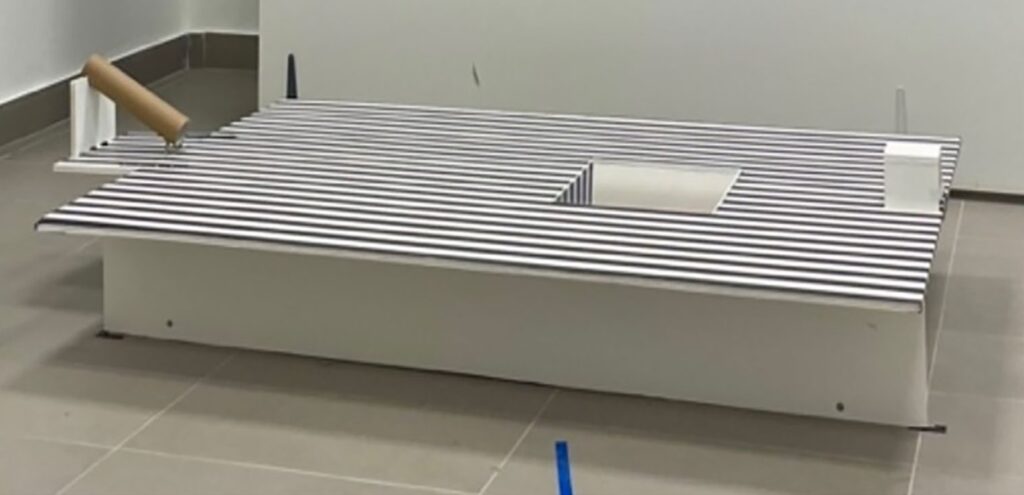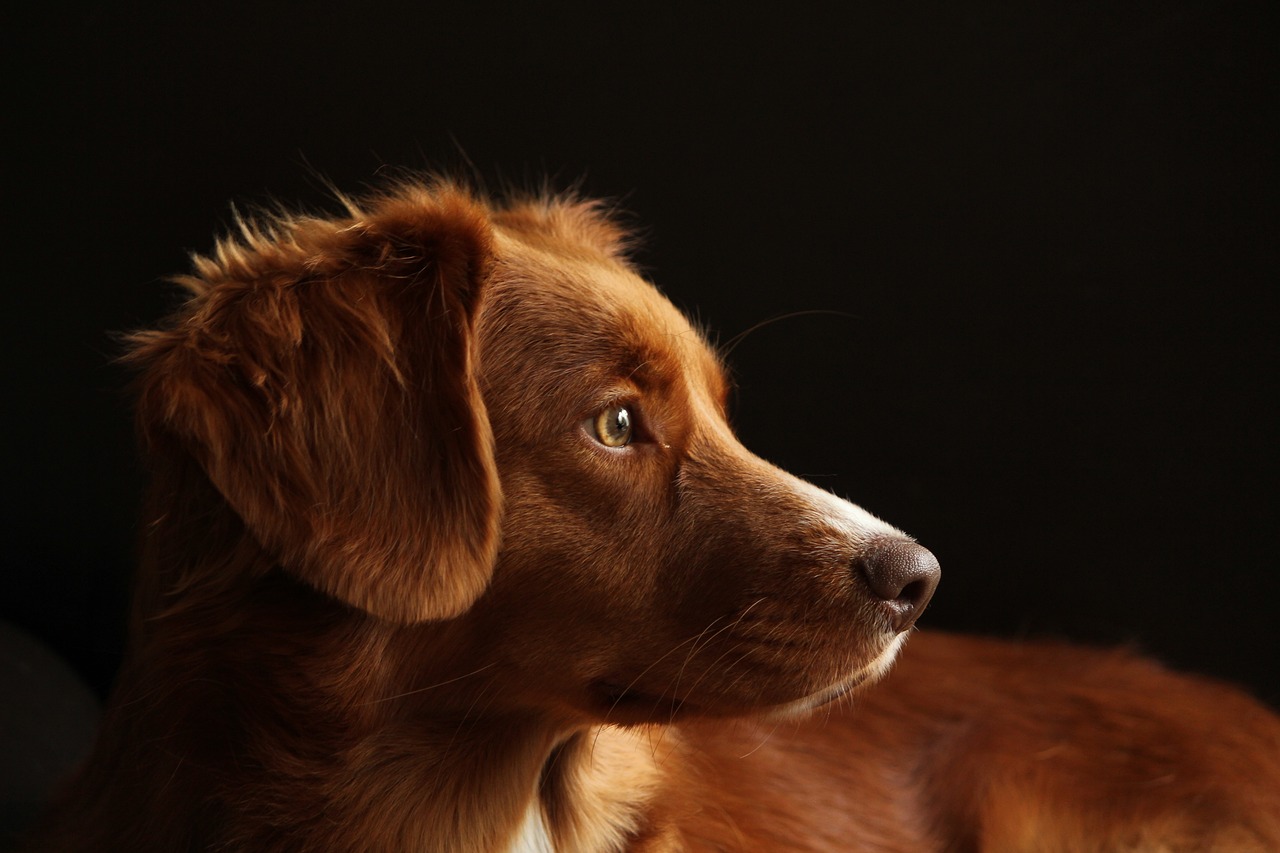Researchers use different methods to understand how animals see the world around them. One of the methods uses optical illusions that often are two-dimensional representations of abstract objects. But what about photographs of real objects? Can animals perceive them as three-dimensional? This question is especially interesting for animals living in a human-constructed world full of photos and paintings. We know that dogs can recognize human faces or even emotions based only on pictures. But maybe faces have so much detail that the lack of the third dimension is not an issue. Recently researchers decided to look more directly at the perception of three-dimensionality in dogs by testing whether they will be fooled by a photo of a hole.

Is there a hole in the table? It definitely seems so to me. The photo shows the apparatus used in the experiment. In this case, there is no hole in the table but a photo of one.
The researcher dropped a ball in the paper tube on the left and let the ball roll over the table. In the experimental condition, the ball rolled over the photo of the hole and ended up in the box on the right. If the dog thought that there was a hole in the table, it should have been surprised that the ball didn’t drop into it. Such a violation of expectation is usually detected by measuring how long someone looks at a scene that is unexpected (if you don’t believe your eyes, you tend to stare). Therefore, researchers compared the dog’s reaction in the experimental condition to a control condition when the ball fell into a real hole in the table (it was a hole of which the photo used in the experiment was taken).
32 dogs were tested for their reaction in experimental and control conditions (in random order). When the ball was visible the dogs were looking at it most of the time – balls are known to be attractive to dogs. Once the ball disappeared from view, what dogs looked at was different between the conditions. In the experimental condition, dogs focused more on the end of the apparatus with the illusory hole which supports the surprise effect and the idea that dogs perceived the illusory hole as real. In the control condition, dogs looked more at the left-hand side of the apparatus, possibly checking if a new ball would appear.
In this experiment, the three-dimensionality of the hole was suggested by pictorial cues: line perspective and shading. It seems that they are enough for the perception of three-dimensionality in dogs.
Polską wersję tego wpisu możesz znaleźć tutaj.
Photo of the experimental apparatus taken from the original research article “Pictorial depth cues elicit the perception of tridimensionality in dogs“.
Dog photo by Sonja Kalee from Pixabay.

